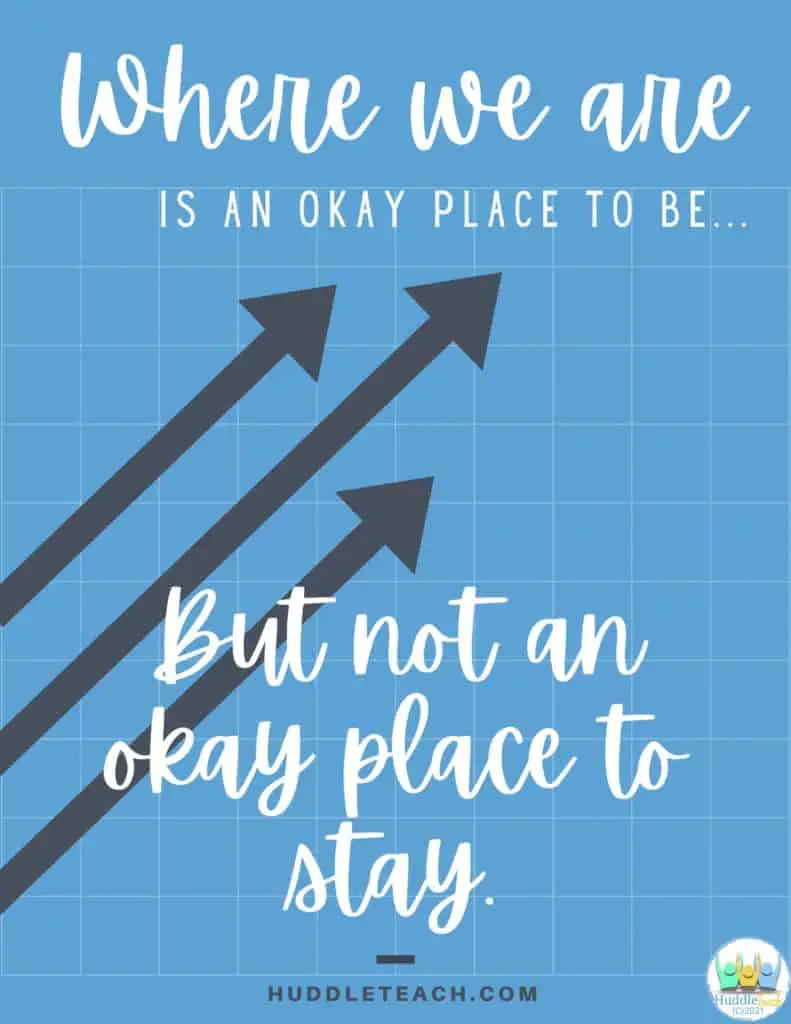3 Actions to Start Your Year

Hooray! You have been hired as a literacy leader! Perhaps that means your job title is literacy coach, reading coach, instructional coach, or even curriculum coordinator. No matter the title, though, your job is to move teachers forward in knowledge and practice. How do you do that without any defined AUTHORITY?
Let’s face it: You didn’t want only AUTHORITY- the ability to command others – or you would have become an administrator. What you want, then, is POWER – the ability to influence others and control their actions. But to be effective, you must use power in a helpful way. (That’s why the position has the name of “coach” or “coordinator.”) So how do you do THAT?
Step 1: Build Relationships and Trust
To be an effective literacy coach – a teacher / learner / leader who is more than just a resource and suggestion giver – put your heart into play!
- Be authentically, generously, you. Share your stories with humility, humor, and wisdom. And of course – smile!
- Get to know your teachers, what they value, and note their frustrations and hot buttons. These are ways they are communicating what they need to feel successful with their students.
- Be a nonjudgmental listener. Sometimes teachers will need to vent. Don’t participate in rumors or drama, and be sure to ask questions to steer a conversation back to literacy, if need be. But listening with a neutral mind is essential!
- Keep your promises, especially concerning resources and assistance.
- Encourage your teachers! Ask what their ideas are for solutions, and when appropriate, remind them to trust their guts. Validate frustrations, and provide gentle feedback or other other resolutions. Remember some teachers do not like attention, so refrain from calling out teachers without prior permission.
- Give grace. Teachers are the royalty of their classroom domain, and it takes humility to ask for help. Support this learning by allowing room for others to make mistakes.
Step 2: Provide Information in Non-Threatening, Relevant Ways
As a literacy coach, you must know where teachers are on their reading-teacher journey, and you must be ready to offer gentle nudges forward. Be visible on campus, in meetings, and in classrooms, but be sure your presence is nonthreatening. HAVE FUN with the faculty, enjoy the beginning of the year work alongside them, and become an important part of the total learning community.
Once you are ready to share information, do so in an intentional way. A tsunami of information will only overwhelm everyone, including yourself. The best option is to provide timely information but to have other information available upon request. Here are some ways to do that:
- Gather a professional library in an accessible location
- Send electronic newsletters
- Build a “course” in your school learning management system, such as Canvas
- Create an optional professional learning community (more on that in an upcoming blog)

Step 3: Facilitate Data Conversations
Most districts now require data driven decision making, even if the official phrase is not used. It’s essentially the practice of aligning assessments with curriculum, collecting the data from assessments, and making instructional decisions that respond to the data. But data often can be formidable.
To help – remember the key word in this situation is conversation. Be sure this is a give and take, not a lecture, rant, or monologue. If an administrator is leading the data review, take notes on information that can be built upon as you work with teachers. Here are some tips to help with the process:
- Look for the big picture in the trends. Do not single-out a class or teacher, even if it’s to point out the good. If you can remove identifying classroom markers, even better. That keeps the focus on what the data says.
- Use the universal question: What do you notice? Use teachers’ responses to shape the conversation.
- Keep the conversations positive, but encourage a sense of urgency for the numbers that indicate a need for intervention. (Hence the mantra above!)
- Create goals and a preliminary set of steps to move forward. Don’t worry – they aren’t etched in stone, and as you meet, they can be modified.
So there you are! Three things to keep in mind as you begin your journey!
Congratulations again on your Literacy Coach Role!
No matter your title, you have just become a key faculty member! We are proud to have you in our READING FAMILY! Remember to check the blog often for more information about leading literacy, and sign up for emails full of resources, information, and freebies! Check out our growing list of literacy training materials, too!


